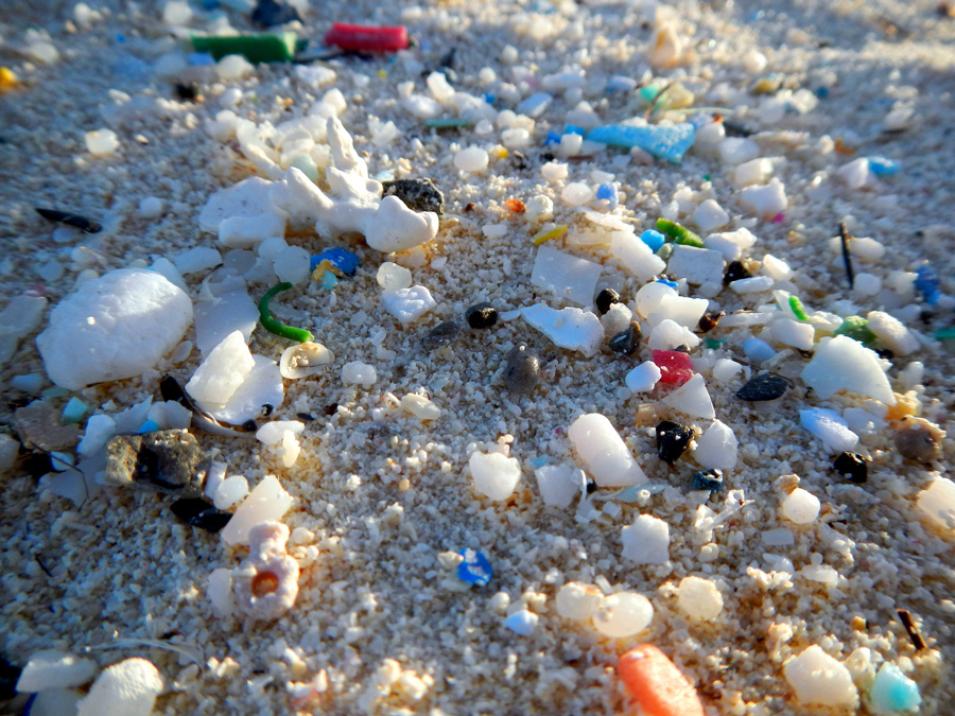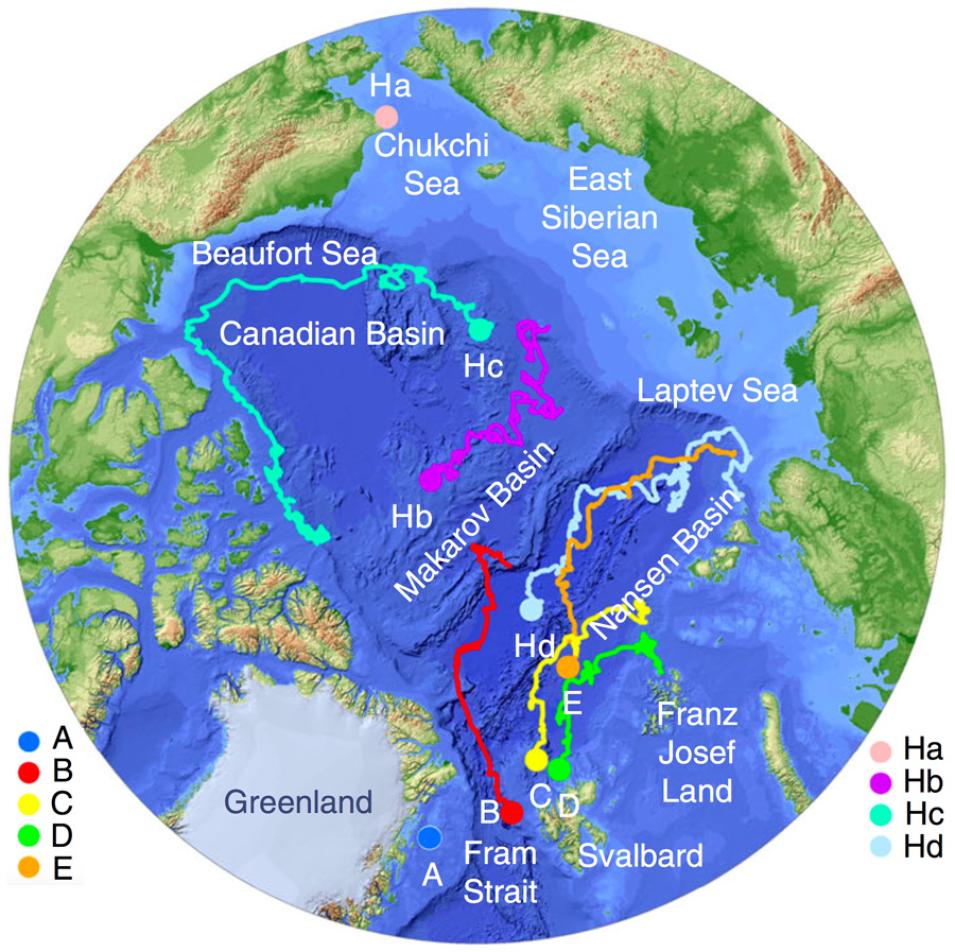Toxicology specialist Gabrielsen was not involved in Peeken’s study, but he was as surprised as Peeken at the high numbers of nanoplastic particles, especially in the Fram Strait. As the Arctic’s exit ramp, the Fram Strait is the conduit for nearly all the plastic contamination in Arctic sea ice. He now wonders how much plastic animals living in and on the ice are consuming. “It’s something we really need to clarify,” he said.
Peeken hopes to better understand why nano- and microplastics concentrate more in sea ice than in sea water. Because most of the Arctic food chain in some way depends on sea ice, plastic enrichment in the ice leads to plastic enrichment in the food chain. Meanwhile, Krumpen anticipates using NSIDC DAAC data more often to understand ice transport in general. But Peeken and Krumpen are both sobered by the findings of this study. “There’s basically no place on Earth anymore where you don’t find microplastics in the ocean,” said Peeken. “I think that’s important for people to know. Otherwise they don’t change their behavior.”
For more information
NASA National Snow and Ice Data Center Distributed Active Archive Center (NSIDC DAAC)
NASA Aqua Earth-Observing Satellite
Advanced Microwave Scanning Radiometer for EOS (AMSR-E)
Advanced Very High Resolution Radiometer (AVHRR)
Scanning Multichannel Microwave Radiometer, Special Sensor Microwave Imager, and Special Sensor Microwave Imager Sounder (SMMR, SSM/I, and SSMIS) Sensors
References
Alfred Wegener Institute. AWI researchers measure a record concentration of microplastic in arctic sea ice. Accessed August 27, 2018.
Bluhm, B. A., H. Hop, M. Vihtakari, R. Gradinger, K. Iken, I. A., Melnikov, and J. E. Søreide. 2018. Sea ice meiofauna distribution on local to pan-Arctic scales. Ecology and Evolution 8(4). doi:10.1002/ece3.3797.
Dawson, A. L., S. Kawaguchi, C. K. King, K. A. Townsend, R. King, W. M. Huston, and S.M. Bengtson Nash. 2018. Turning microplastics into nanoplastics through digestive fragmentation by Antarctic krill. Nature Communications 9: 1001. doi:10.1038/s41467-018-03465-9.
Gigault, J., A. ter Halle, M. Baudrimont, P.-Y. Pascal, F. Gauffree, T.-L. Phi, H. El Hadri, B. Grassl, S. Reynaud. 2018. Current opinion: What is a nanoplastic? Environmental Pollution 235: 1,030-1,034. doi:10.1016/j.envpol.2018.01.024.
Law, K. L., R. C. Thompson. 2014. Microplastics in the seas. Science 345(6193): 144-145. doi:10.1126/science.1254065.
NOAA Marine Debris Program. What we know about plastic marine debris. Accessed October 29, 2018.
NOAA National Ocean Service. The Great Pacific Garbage Patch. Accessed August 27, 2018.
Parker, L. 2018. We made plastic. Now we’re drowning in it. National Geographic. Accessed August 27, 2018.
Peeken, I., S. Primpke, B. Beyer, J. Gütermann, C. Katlein, T. Krumpen, M. Bergmann, L. Hehemann, and G. Gerdts. 2018. Arctic sea ice is an important temporal sink and means of transport for microplastic. Nature Communications 9: 1505. doi:10.1038/s41467-018-03825-5.
Thompson, R. C., Y. Olsen, R. P. Mitchell, A. Davis, S. J. Rowland, A. W. G. John, D. McGonigle, A. E. Russell. 2004. Lost at sea: Where is all the plastic? Science 304(5672): 838. doi:10.1126/science.1094559.
Tschudi, M., C. Fowler, J. Maslanik, J. S. Stewart, and W. Meier. 2016. Polar Pathfinder Daily 25 km EASE-Grid Sea Ice Motion Vectors, Version 3. Boulder, CO USA. NASA National Snow and Ice Date Center Distributed Active Archive Center. doi:10.5067/O57VAIT2AYYY.
| About the remote sensing data |
| Satellites |
Aqua; Defense Meteorological Satellite Program F8, F11, F13, and F17; National Oceanic and Atmospheric Administration-9, -11, -12, and -14; Nimbus-7 |
| Platforms |
Buoys |
| Sensors |
Advanced Microwave Scanning Radiometer for EOS (AMSR-E)
Advanced Very High Resolution Radiometer (AVHRR)
Scanning Multichannel Microwave Radiometer (SMMR)
Special Sensor Microwave Imager (SSM/I)
Special Sensor Microwave Imager/Sounder (SSMIS)
|
| Data set |
Polar Pathfinder Daily 25 km EASE-Grid Sea Ice Motion Vectors (NSIDC-0116) |
| Resolution |
25 kilometer |
| Parameters |
Ice velocity, sea ice motion |
| DAAC |
NASA National Snow and Ice Data Center Distributed Active Archive Center (NSIDC DAAC) |



